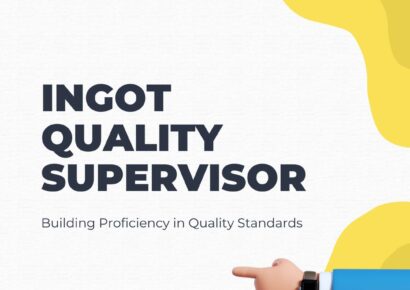Currently Empty: ₹0.00
About Course
The Ingot Maintenance Technician is pivotal in ensuring the operational integrity of ingot production equipment. Their responsibilities include conducting routine inspections, performing repairs, and implementing preventive maintenance measures. With a keen eye for detail and technical expertise, they uphold machinery efficiency, minimize downtime, and contribute to overall production quality. Adherence to safety protocols and proactive troubleshooting are integral parts of their role, ensuring uninterrupted ingot manufacturing processes.
Course Content
Introduction to Ingot Manufacturing Process
-
Ingot Manufacturing Process Flow
00:00
Equipment Maintenance
Utilities
6s Occupational Health, Safety, and Environment (OHSE)
Workplace Help and Resources
Tags








